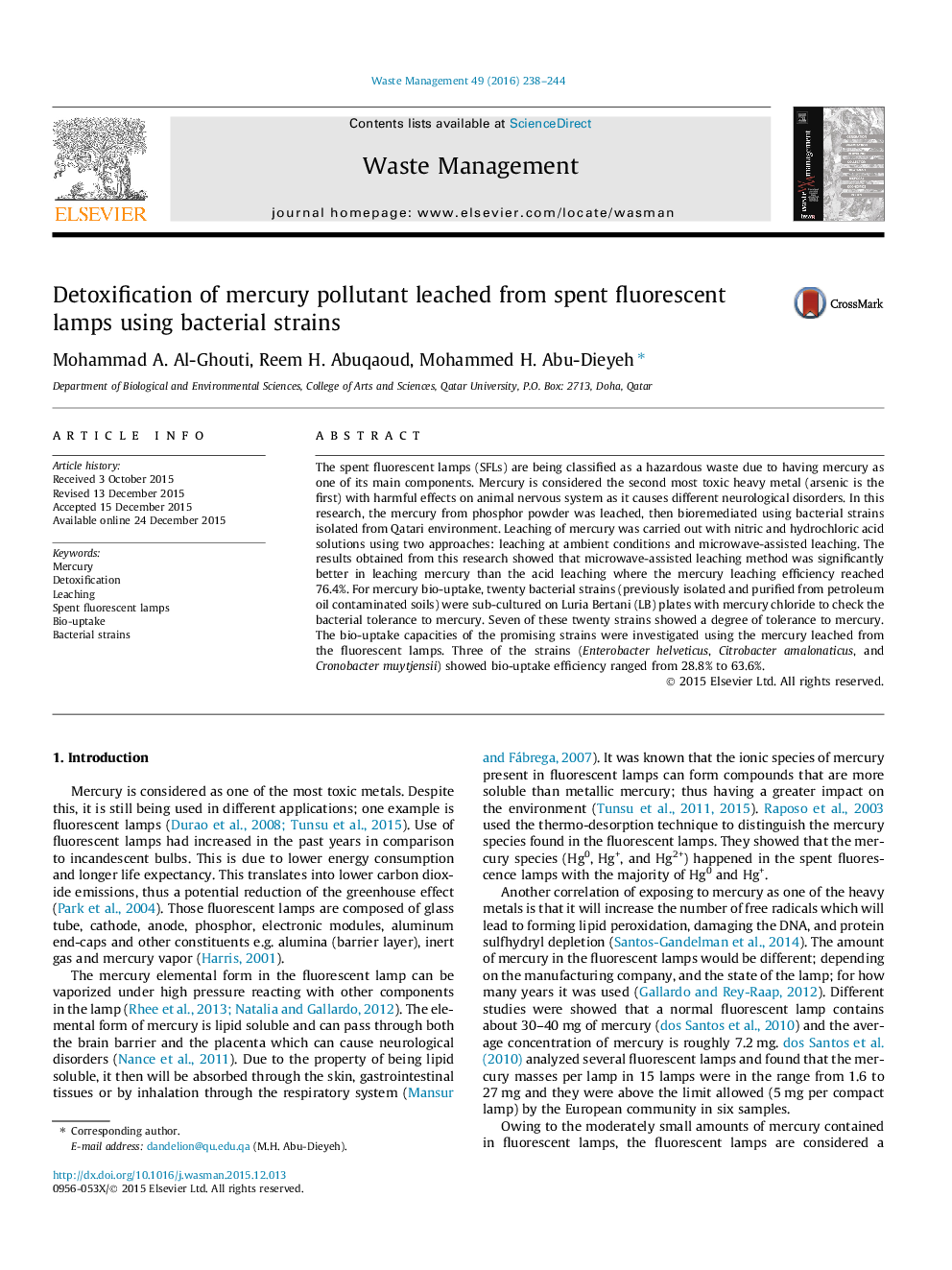| کد مقاله | کد نشریه | سال انتشار | مقاله انگلیسی | نسخه تمام متن |
|---|---|---|---|---|
| 6353789 | 1622637 | 2016 | 7 صفحه PDF | دانلود رایگان |
- Bio-uptake of mercury from fluorescent lamp leachates has been investigated.
- The microwave-assisted leaching was better in leaching mercury than the acid leaching.
- The leached mercury using microwave-assisted leaching reached 76.4%.
- The bioremediation efficiency was ranging from 28.8% to 63.6%.
- Enterobacter helveticus exerted the best bio-uptake efficiency with a value of 63.6%.
The spent fluorescent lamps (SFLs) are being classified as a hazardous waste due to having mercury as one of its main components. Mercury is considered the second most toxic heavy metal (arsenic is the first) with harmful effects on animal nervous system as it causes different neurological disorders. In this research, the mercury from phosphor powder was leached, then bioremediated using bacterial strains isolated from Qatari environment. Leaching of mercury was carried out with nitric and hydrochloric acid solutions using two approaches: leaching at ambient conditions and microwave-assisted leaching. The results obtained from this research showed that microwave-assisted leaching method was significantly better in leaching mercury than the acid leaching where the mercury leaching efficiency reached 76.4%. For mercury bio-uptake, twenty bacterial strains (previously isolated and purified from petroleum oil contaminated soils) were sub-cultured on Luria Bertani (LB) plates with mercury chloride to check the bacterial tolerance to mercury. Seven of these twenty strains showed a degree of tolerance to mercury. The bio-uptake capacities of the promising strains were investigated using the mercury leached from the fluorescent lamps. Three of the strains (Enterobacter helveticus, Citrobacter amalonaticus, and Cronobacter muytjensii) showed bio-uptake efficiency ranged from 28.8% to 63.6%.
Journal: Waste Management - Volume 49, March 2016, Pages 238-244
